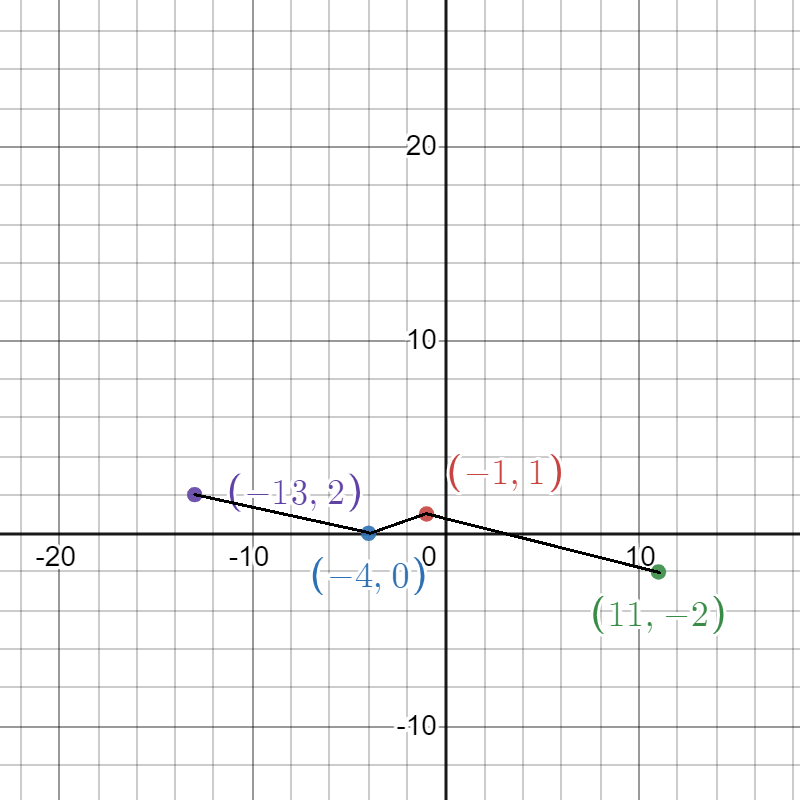a) In order to plot g(x) we translate the endpoints of f(x) as follows :-
\((-4,4)\) in f(x) ⇔ \((-13,2)\) in g(x)
\( (0,2)\) in f(x) ⇔ \((-1,1)\) in g(x)
\((-1,0)\) in f(x) ⇔ \((-4,0)\) in g(x)
\((4,-4)\) in f(x) ⇔ \((11,-2)\) in g(x)
∴ The graph of g(x) is plotted below -

________________________________________________________________________________________________________
b) Each point \((a,b)\) in f(x) becomes \((3a-1,{b \over 2})\) in g(x).
Now, that implies a horizontal stretch by a factor of 3 and a horizontal shift by 1 unit left for a.
So, that gives us \(f({1 \over 3}.(x+1))\)
As for b, the graph shrinks vertically by a factor of \(1\over 2\).
So that gives \({1\ \over 2}f({1 \over 3}.(x+1))\)
So that completes,
\(g(x) = {1 \over 2}f({x+1 \over 3})\)
_______________________________________________________________________________________________________
c) In order to get the graph \(y=g(x)\), the original graph can be stretched horizontally by a factor of 3, then shrunk vertically by a factor of 1/2 and shifted left by 1 unit.
_________________________________________________________________________________________________________
~ It's a pleasure! :)